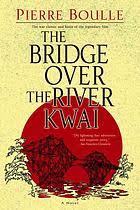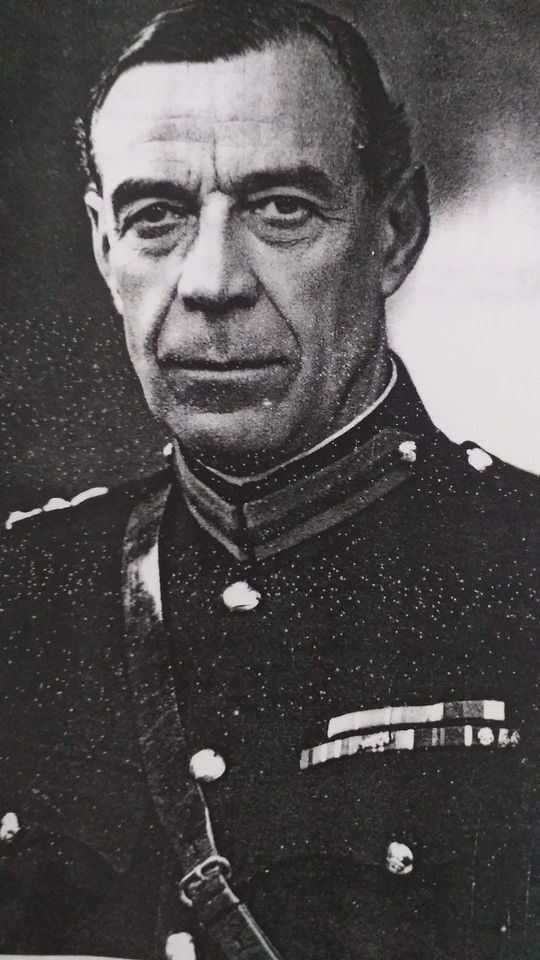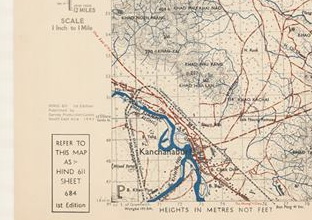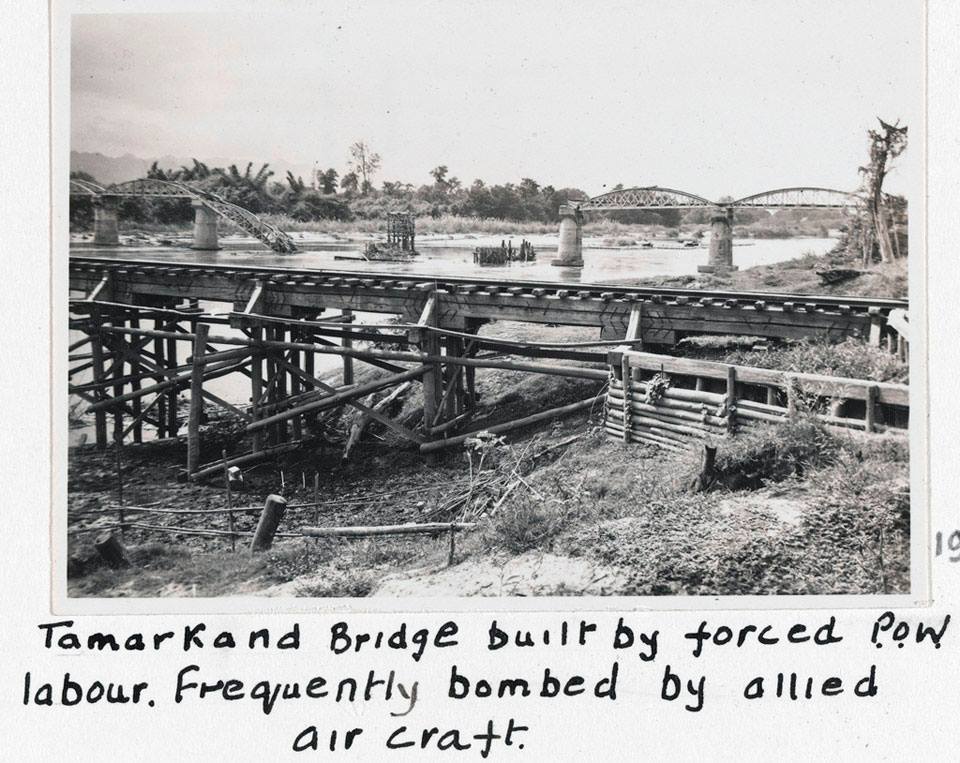The novel that started it all:
https://en.wikipedia.org/wiki/The_Bridge_over_the_River_Kwai
The Bridge over the River Kwae (French: Le Pont de la rivière Kwaï) is a novel by the Frenchman Pierre Boulle, published in French in 1952 (th English version in 1954) [1]. The story is fictional but uses the construction of the Burma Railway, in 1942–1943, as its historical setting, and is partly based on Pierre Boulle’s own life experience working in Malaysia rubber plantations and later working for allied forces in Singapore and Indochina during World War II. The novel deals with the plight of World War II British prisoners of war forced by the Imperial Japanese Army to build a bridge for the “Death Railway”, so named because of the large number of prisoners and conscripts who died during its construction. The largely fictitious plot is based on the building in 1942 of one of the railway bridges over the Mae Klong River—renamed Kwae Yai in the 1960s—at a place called ThaMaKam, five kilometres from the walled Thai town of Kanchanaburi.

I believe that it can readily be acknowledged that the 1957 David Lean movie version of the 1952 book by Pierre Boulle is great theater but terrible history. Over the ensuing decades, it has received numerous awards. It was also a box office success. It was the highest-grossing film of 1957 in the USA and was also the most popular film at the British box office that year. In addition, when it was first broadcast on American TV in 1966, ABC paid a hefty $1.8m for the rights.
But having said that, Boulle’s story is pure fiction and even that wasn’t good enough for David Lean. He knew that in order for the movie to do well in the USA, it had to have an American star. History be damned; we need to make money! So he had the part of British officer Warden in the book re-written as CDR Shears from the USS HOUSTON. He then hired William Holden to play that part. No POW ever successfully escaped from the Kanchanaburi area.
Although the well-known British actor Alec Guinness was casted in the leading role, Lean had to defend himself in England for seemingly portraying COL Nichols as a ‘collaborator’! Lean also confirmed that Columbia Studios almost stopped filming after three weeks because there was no white woman in the film, forcing him to add what he called “a very terrible scene” between Holden and a nurse on the beach.
In short, there were no US POWs anywhere near the bridges during their construction. The vast majority of US POWs, including hundreds of HOUSTON survivors worked in Burma not Thailand. They were, however, later housed near those bridges in the ‘rest camps’ following the completion of the Railway. A few of them were later used to repair bomb damage on the wooden bridge.
There is even a minor controversy over the prop bridge that was built in Sri Lanka for the movie. Some say it was based on an actual Railway bridge near SangKlaBuri. But supposedly Lean offered a prize for the submission of plans from a wooden bridge. A group of students from MIT were said to have won. It is doubtful that in the mid-50s they would have had access to photos of the SangKlaBuri bridge on which to base their model. But it is not impossible.
Furthermore, when the film was released in Japan under the title Bridge Built on the Battlefield, it too was met with derision for portraying the Japanese Engineers as incompetent.
Perhaps The Bridge on the River Kwai should be for all of us a cautionary tale when we might be tempted to accept the Hollywood version of an event as actual history.
============
The real senior Allied officer at the bridge was British Lieutenant Colonel Philip Toosey. Julie Summers, in her book The Colonel of Tamarkan, writes that Pierre Boulle, who had been a prisoner of war in Thailand (or IndoChina), created the fictional Nicholson character as an amalgam of his memories of collaborating French officers. Unlike the fictional Nicholson, Toosey was not a collaborator with the Japanese. Toosey, in fact, delayed building the bridge by obstruction. Whereas Nicholson disapproves of acts of sabotage and other deliberate attempts to delay progress, Toosey encouraged this: termites were collected in large numbers to eat the wooden structures, and the concrete was badly mixed. Unlike Nicholson, Toosey was an artilleryman, not an engineer.

The novel was made into the 1957 film The Bridge on the River Kwai, directed by David Lean, and filmed in Sri Lanka, and a bridge was erected for the purpose of shooting the film over Kelani River at Kitulgala, Sri Lanka. The film was relatively faithful to the novel, with two major exceptions. Shears, who is a British commando officer like Warden in the novel, became an American sailor and USS HOUSTON survivor who escapes from the POW camp. Also, in the novel, the bridge is not destroyed: the train plummets into the river from a secondary charge.
William Holden notwithstanding, no American POWs were involved in the building of either of the bridges. COL Toosey led a group of British and Dutch POWs that built the original wood and bamboo bridge between DEC 42 and FEB 43. They then were tasked with laying the concrete pillars for an iron bridge that was looted and shipped from Java. That bridge was ready for traffic in APR 43.
The 1960s book and movie prompted tourists to arrive in Kanchanaburi seeking to find “the bridge on the River Kwai”; except that there was no such place as the ‘river Kwai’. An iron and concrete bridge still existed at ThaMaKam (as described above) but the river that it spanned was known as the Mae Klong [not to be confused with the MeKong which is on the east border of Thailand with Laos]. Indeed, just a few kilometers downstream from that bridge, is the Kwae Noi (แคว หน่อย; literal translation from the Thai meaning small tributary), but it was shown on the maps of the period as joining into the Mae Klong (แม่กลอง) which continued on to empty into the Gulf of Siam just to the SW of Bangkok.
[1] According to Clifford Kinvig, the movie was released in Japan under the title: Bridge built in the Battle Zone.

The Bridge on the River Kwai was first constructed of wood and bamboo. Later, the current bridge was transported from Java and re-assembled as part of the TBR. US POWs claim to have been involved – early in 1944 – in maintenance of the bridge but which bridge is not specified and neither is when the original bridge was finally dis-mantled.
The iron bridge was still in use for local traffic after the Allies had dropped the central spans and the Thais repaired it with the two rectangular (as opposed to the semi-circular) spans. Not long after these repairs, in the early 1950s, the book and movie brought a renewed interest in the TBR and the bridge itself. Tourists and historians came looking for the “Bridge on the River Kwai” but officially there wasn’t one. As late as the mid-50s that portion of the river was still labeled as Mae Klong on Thai maps. Just below bridge and the main city of Kanchanaburi, the Kwae Noi river joined the Mae Klong. Because of the movie (more than the book) had so popularized the “Bridge on the River Kwai”, the Thai gov’t was prompted to rename the river above the Kwae Noi (small) as the Kwae Yai (large) and the river below where they joined stayed on as the Mae Klong. So, the “Bridge on the River Kwai“ is really a product of modern fiction, not history! When the Japanese built them, they were known only as bridge #277!
Just to complete the story of the two actual bridges, they were first damaged by aerial bombing in FEB 45 and the three central spans of the iron bridge were dropped in JUN, thereby ending the usefulness of the TBR.

According to IJA records, there were a total of 688 bridges on the TBR route. To the Japanese, this bridge was known simply as bridge #277 at Km 50 from Nong Pladuk. The other significant bridges are all in Burma:
- 90-metre wooden trestle across Songkalia River km. 294
- 56-metre wooden trestle across Mekaza River km. 319 [Mezali]
- 75-metre wooden trestle across Zamithi River km. 329 [Zami]
- 50-metre concrete bridge across Zami River km. 333 [Apalon]
- 60-metre wooden trestle across Anakui River km. 369
[https://en.wikipedia.org/wiki/Burma_Railway#The_bridge_on_the_River_Kwae]
Like the camps, the bridges of the TBR were simply numbered. The terrain of the TBR became much more difficult once it passed Chung Kai near the end of the Kwae Noi River and the current location of the second CWGC cemetery in that area.
After some consternation and discussion, the ‘powers that be’ driven mainly by the quest for tourist money renamed the section of the river above the Kwae Noi as the Kwae Yai (แคว ใหญ่ = large tributary). So officially now the Kwae Noi merges into the Kwae Yai to form the Mae Klong which goes on its merry way to the gulf as it had done for eons before. And herein we have a perfect amalgamation of government bureaucracy and commercial interests.
While we are on the topic of Thai language words used by both the Japanese and the POWs it needs noting that there are seemingly endless mis-translations of names and places along the railway. For example, the area near the bridges where the huge post-construction POW camps were located is known as ThaMaKam (ท่า มะขาม) but to the POWs it was often called Thamarkam. And the city of Kanchanaburi was known as Kanburi or sometimes even Kamburi. One of my personal favorites was the camp they called Tamwan. Again, no such place exists in that area. It wasn’t until I discovered a POW’s description of the conditions at that camp where he described its location as 14 Km south of Kanburi that I realized that the actual place name was Tha Muang. I suppose that to the western and possibly even the Japanese ear, Tha Muang could become Tamwan.
There is another twist on the Thai language that comes into play here. Boulle chose the word ‘Kwai’ to use in his title. In Thai, this is written as ควาย and translates as buffalo which is also sometimes used as a pejorative slang for stupid. The word ‘Kwae’ for tributary transliterates as เเคย; a similar but completely different word. I have never seen anywhere that anyone has explored the etymology of Boulle’s use of this word or if it was just another made-up name in his work of fiction.
===================================
1.1b a footnote in History
The Bridge on the River Kwai is one of the few surviving parts of the TBR. It is undoubtedly the single most recognizable section of the TBR; next would be the Wang Po Trestle; #3 would be HellFire Pass. But the bridge area was also perhaps one of the most un-eventful sections of the TBR as well. All things considered, it was one of the best places (relatively speaking) to be a POW on the TBR.
Unlike the absurd story told in the novel and movie, it was not the British POWs who up staged the IJA Engineers to build the bridge. The Japanese were excellent engineers and the two groups assigned to build the initial wooden and then the iron bridge were very experienced. All told, the building of the bridge was accomplished on schedule and without much hardship on the part of the POWs.
The commander of the bridge building POWs was British LtCol Toosey (not Nicholson). He was an Artillery Officer (not an engineer). His unit was part of the earliest POWs send from Singapore, first to NongPlaDuk, then up to Kanchanaburi to build the bridge. It only took them a matter of weeks (NOV 42 – FEB 43) to complete that task. Then they shifted to building the concrete pillars for the iron bridge which had been dismantled on Java and whose parts were beginning to arrive. That task was completed APR 43.
Although the walled city of Kanchanaburi was 130 Kms from Bangkok, it was a major trading port established in the banks of two large rivers that flowed the length of the province. It was surrounded not by jungle (as portrayed in the movie) but farmland producing a large variety of crops. IOW, although the POWs may have lived the daily life comparable to a dog, they suffered few of the hardships of their counterparts working in the actual jungle. Toosey’s fame is rooted in his leadership and rapport with the IJA camp commandant that spared his men some of the more brutal treatment that others experienced elsewhere. Conventional folklore says only 9 men died while building those bridges.
There is a reason why the IJA chose Kanchanaburi as the place to consolidate the POWs in 1944. It was the closest point of ‘civilization’ along the TBR. It provided the space, food and water for tens of thousands of POWs as they were processed on to other camps or other destinations (Vietnam or Japan primarily). After completion of the bridges, Toosey and many of his unit were returned to NongPlaDuk and some were later sent to build the airfield in Ubon.
As it were, the bridges were hardly more that an uneventful, quite successful and relatively short footnote in the entire TBR saga. But thanks to its rehabilitation in the 1950s by the Thai government and then the fame brought on by the novel and 1957 movie, it has become the single most famous point of the TBR. Added to this is the ready accessibility (less than a 3hr drive) from Bangkok, which allows for it to be an easy day-trip for Thais and tourists alike. Its central position even makes it a convenient stopping point for tourists traveling deeper into the Province. HellFire Pass, for example, is only an hour farther west; Three Pagodas Pass a few more hours away.
[Also see the TBR Gallery a Section 17]
If you only ever watch one video about this incredible saga, let it be this one entitled “The True Story of the Bridge on the River Kwai” found at:
There are any number of YOUTUBE videos that address the overall Railway story.
And then, there is the Col Bogey March!
